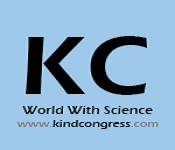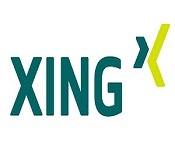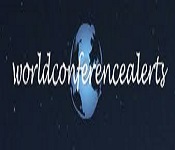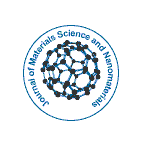Theme: Nanomedicine Research on Effective Treatment for COVID-19
Advanced Materials-2020
With the overwhelming joy, we invite you to the 26th International Conference on Advanced Materials, Nanotechnology and Engineering during June 22-23, 2020.
Invitation Letter
Dear Speakers, Delegates, Exhibitors & Sponsors,
Conference Series LLC Ltd invites you to find a path to carve out a near-to-perfect platform where people like you and us can get together, stand together and discuss these possibilities.
Advanced Materials 2020 has been finalized to take place during June 22-23, 2020 and will initiate its journey towards its aim of unifying people from different corner of the globe with the theme “Nanomedicine Research on Effective Treatment for COVID-19”.
As the premier event, we have developed a program with your interests in mind. We have not only increased the number of opportunities for you to network with colleagues from across the world but also introduced more focused sessions that will feature cutting edge presentations, special panel discussions and livelier interaction with industry leaders and experts.
Attend Advanced Materials 2020 to network with your peers, exchange expertise and experiences, and arm yourself with the latest information to take your department to the next level.
Importance and Scope:
Advanced Materials plays a vital role in our lives because of its uniqueness in properties and extended application in various industries. These are the basis of modern science and technology. Advanced Materials are at the heart of many technological developments that touch our lives and find applications such as electronic materials for communication and information technology, Material Science for Better Engineering education, sensors for intelligent environment, energy materials for renewable energy and environment, light alloys for better transportation, materials for strategic applications and more.
Nanotechnology is science, engineering, and technology conducted at the nanoscale, which is about 1 to 100 nanometers. Nanotechnology is the study of application of extremely small things and can be used across all the other science fields, such as chemistry, biology, physics, materials science, and engineering. Today's scientists and engineers are finding a wide variety of ways to deliberately make materials at the nanoscale to take advantage of their enhanced properties such as higher strength, lighter weight, increased control of light spectrum, and greater chemical reactivity than their larger-scale counterparts
We encourage submission of papers for the following types of contribution
- Oral Presentation
- Poster Presentation
- Workshop
- Company Presentations
- Virtual presentations
Advanced Materials Conference aims to proclaim knowledge and share new ideas amongst the professionals, industrialists and students from research areas of Materials Science, Nanotechnology, Chemistry and Physics to share their research experiences and indulge in interactive discussions and technical sessions at the event. The Conference will also have a space for companies and/or institutions to present their services, products, innovations and research results.
Theme of the conference is designed in such a way to uncover the basic principles that lead to the drastic emergence and technologies in the field of Materials Science and Engineering. We hope Advanced Materials 2020 is the best platform to discuss the basic principles involved in the development of Materials Science. As this conference deals with the basic concepts, students, delegates, academicians and business people can attend the conference to root up the knowledge and excel in this field.
Why to attend?
Advanced Materials, Nanotechnology and Engineering offers a fabulous chance to meet and make new contacts in the field of Materials Science and Engineering, by giving coordinated effort spaces and break-out rooms with lunch facilities for delegates between sessions with precious systems administration time for you. It enables agents to have issues tended to on Materials Science by perceived worldwide specialists who are in the know regarding the most recent improvements in the Materials Science field and give data on new methods and innovations. This International Materials Science gathering will include widely acclaimed keynote speakers, all- hands conferences, youthful research discussion, blurb introductions, specialized workshops and vocation direction sessions.
Target Audience
- Materials Science Engineers
- Nanotechnology Engineers
- Researchers from Mining and Metallurgy field
- Scientists and students from Tissue Science engineering and Biomaterials
- Delegates from Materials Science and Nanotechnology Associations
- Professors, Students, Researchers and Technical Staff from Materials Science and Engineering Department
- Delegates from Materials Science, Semiconductor, Polymer, Fuel Cell and Energy related industries
- Nanotechnology and Materials Science Associations and Societies
- Nanotechnology and Materials Science Faculties
- Directors of Nanotechnology Companies
- Nanotechnology and Materials Engineering Students
- Pharmaceutical Industry Mentors and Marketers
- Nanotechnology and Materials Science Scientists
Come be a Part of it...!
Who should attend?
Advanced Materials 2020 conference will be useful to participants both from the Academics and Industry working in all the domains of Materials Science and Nanotechnology. Advanced Materials 2020 is especially intended for Investors, Entrepreneur, Capitalists, Venture and other readers with a need to know where the Nanotechnology market is headed in the future. The members around the globe focused on learning about the Pharmaceutical Nanotechnology and the developments in the most recent techniques also newest updates in this field.
- Nanotechnology and Materials Science Associations and Societies
- Nanotechnology and Materials Science Faculties
- Directors of Nanotechnology Companies
- Nanotechnology and Materials Engineering Students
- Pharmaceutical Industry Mentors and Marketers
- Nanotechnology and Materials Science Scientists
- Directors of Materials Science companies
- Nanotechnology Engineers
- Nanotechnology and Materials Science Researchers
- Exhibitors and Sponsors
Track 1: Spintronics, Optical Materials and Plasmonics
Related Conferences:
21st World Congress on Materials Science and Engineering, June 22-23, 2020 Rome, Italy | 20th International Conference on Materials Science and Engineering, May 25-26, 2020 Osaka, Japan | European Meeting on Materials Science and Nanotechnology, March 09-10, 2020 Rome, Italy
Track 2: Carbon Nanostructures and Grapheme
Related Conferences:
18th International Conference on Emerging Materials and Nanotechnology, February 26-27, 2020 London, UK | World Congress on Carbon and Advanced Energy Materials, March 16-17, 2020 Sydney, Australia. | Advances in Materials Science and Engineering, Mar 23-24, 2020 Amsterdam, Netherlands
Related Conferences:
18th International Conference on Emerging Materials and Nanotechnology, February 26-27, 2020 London, UK | World Congress on Carbon and Advanced Energy Materials, March 16-17, 2020 Sydney, Australia. | Advances in Materials Science and Engineering, Mar 23-24, 2020 Amsterdam, Netherlands
Track 4:Advanced Materials and Research
Materials science in Industry has many applications which include materials design that incorporate the classic principles of good design with the transformation of technology and sciences, cost-benefit in industrial production of materials, processing methods like rolling, welding, casting, crystal growth, thin-film deposition, ion implantation, glass blowing, etc. and analytic methods such as electron microscopy, calorimetry, X-ray diffraction etc.
With the term metallurgy and alloy materials, we refer to the knowledge-guided approach for the development and compositionally sensitive design of novel metallurgical and alloy materials.
Related Conferences:
5th Annual Congress on Nano medicine and Drug Delivery August 10-11, 2020 Bangkok, Thailand | 23rd International Conference on Advanced Materials and Simulation December 02-03, 2019, Barcelona, Spain | Smart Materials and Structures September 14-15, 2020 Dubai, UAE.
Track 5:Nanotechnology & Advanced Materials
Nanomaterials are high importance nowadays in most fields such as Medicine, Chemotherapy, Drug delivery, Manufacturing processes, Paints, etc., because of their novel characteristics like increased strength, Chemical reactivity or conductivity. Artificially made nanomaterials are those which are engineered for an intention with the physio-chemical properties for a specific purpose or function. The methods of preparing nanomaterials also differ based on the purpose. Nanotechnology is highly used in detecting devices as their nanostructure with greater surface area per weight allows the electrical properties of the detecting elements to be changed easily. Nanotechnology controls matter at the atomic and molecular scale. Several applications of nanomaterials are used extensively in catalysis to boost up chemical reactions. Polymer based nanomaterials have high significance in Analytical Chemistry, separation process and research as they can amplify the sensitivity and improve the stability of traditional materials and methods. Nanomaterials are one of the best cleaning agent for the environment. They are used in water purification processes, detect chemical and biological agents in the soil and air, desalination. Materials can be made to be stronger, lighter, more durable, more reactive, better electrical conductors using nanotechnology.
Related Conferences:
21st World Congress on Materials Science and Engineering, June 22-23, 2020 Rome, Italy | 20th International Conference on Materials Science and Engineering, May 25-26, 2020 Osaka, Japan | European Meeting on Materials Science and Nanotechnology, March 09-10, 2020 Rome, Italy
Track 6:Optoelectronics
The term optoelectronics is a specific discipline of electronics that focuses on light-emitting or light-detecting devices. Light-emitting devices use voltage and current to produce electromagnetic radiation i.e., light. Such light-emitting devices are commonly used for purposes of illumination or as indicator lights. In contrast, light-detecting devices, such as phototransistors, are designed to convert received electromagnetic energy into electric current or voltage. Light-detecting devices can be used for light sensing and communication. Examples of these include darkness-activated switches and remote controls. In general terms, light-detecting devices work by using photons to liberate bound electrons within semiconductor materials.
Related Conferences:
18th International Conference on Emerging Materials and Nanotechnology, February 26-27, 2020 London, UK | World Congress on Carbon and Advanced Energy Materials, March 16-17, 2020 Sydney, Australia. | Advances in Materials Science and Engineering, Mar 23-24, 2020 Amsterdam, Netherlands
Track 7:Microstructure and Characterization of Materials
Nanostructured Materials (NsM) are materials with a microstructure the trademark length size of which is on the request of a couple (commonly 1–10) nanometers. NsM might be in or far from thermodynamic harmony. Nanostructured Materials combined by supramolecular science are cases of Nanostructured Materials in thermodynamic harmony. Nanostructured Materials comprising of nanometer-sized crystallites (e.g. of Au or NaCl) with various crystallographic introductions or potentially synthetic creations are far from thermodynamic harmony.
Related Conferences:
5th Annual Conference and Expo on Biomaterials, February 24-25, 2020 Berlin, Germany | 33rd International Conference on Nano materials and Nanotechnology, MAR 25-26, 2020, LONDON , UK | 31st European Congress on Nano technology and Materials Engineering, February 12-13, 2020 Paris, France
Track 8: Structural engineering and Aerospace Structures
The Materials used for Manufacturing of engineering products are termed engineering materials. These engineering materials are the backbone of all engineering products. The design, manufacturing, commercialization and performance of any engineering products are basically depends on the material being used for that product.
Related Conferences:
5th Annual Congress on Nano medicine and Drug Delivery August 10-11, 2020 Bangkok, Thailand | 23rd International Conference on Advanced Materials and Simulation December 02-03, 2019, Barcelona, Spain | Smart Materials and Structures
Track 9:Ceramics, Polymer and Advanced Fiber Composites
The recent advances in Polymer Chemistry such as the innovative Polymeric Smart materials, Application of Polymers in Medicinal field, their application in different domains of Science and Technology. The significant role of polymers in human life will be highlighted in this Conference and this will be a milestone in the revolution of Materials and Polymer Chemistry. Discussions related to Materials and Polymer Chemistry through variable means will definitely explore the new methods to improve the existing technologies and to develop new applications of the polymer with an aim to make the Environment Eco-Friendly.
Related Conferences:
21st World Congress on Materials Science and Engineering, June 22-23, 2020 Rome, Italy | 20th International Conference on Materials Science and Engineering, May 25-26, 2020 Osaka, Japan | European Meeting on Materials Science and Nanotechnology, March 09-10, 2020 Rome, Italy
Track 10:Nanoparticle and Nanoscale Research
Nowadays, gene delivery for therapeutic objects is considered one of the most promising strategies to cure both the genetic and acquired diseases of human. The design of efficient gene delivery vectors possessing the high transfection efficiencies and low cytotoxicity is considered the major challenge for delivering a target gene to specific tissues or cells. On this base, the investigations on non-viral gene vectors with the ability to overcome physiological barriers are increasing. Among the non-viral vectors, nanoparticles showed remarkable properties regarding gene delivery such as the ability to target the specific tissue or cells, protect target gene against nuclease degradation, improve DNA stability, and increase the transformation efficiency or safety.
- Nanoparticles in gene delivery
- Lipid-based nanoparticles
- Polymer-based nanoparticles
- Inorganic nanoparticles
Related Conferences:
21st World Congress on Materials Science and Engineering, June 22-23, 2020 Rome, Italy | 20th International Conference on Materials Science and Engineering, May 25-26, 2020 Osaka, Japan | European Meeting on Materials Science and Nanotechnology, March 09-10, 2020 Rome, Italy
Track 11:Biomedical Nanotechnology
The major thrust of biomedical nanotechnology is to apply the benefits of nanotechnology to healthcare e.g., imaging and diagnostics; nanodrugs; drug delivery; prostheses; and implants; etc. Nanotechnology has been earlier used to improve drug properties. For example, pacliaxel Taxol, an anticancer drug, which is used to treat primary epithelial ovarian carcinoma, breast, colon, and lung cancers, exhibits low water solubility and, therefore, poor bioavailability. Therefore, it was formulated in Chremophor EL polyethoxylated castor oil, which has been implicated in several drug associated toxicities. To overcome these shortcomings associated with the use of Cremophor, paclitaxel bound to albumin nanoparticles Abraxane were developed for clinical use. There is a huge interest in employing nanotechnology for cancer drug delivery. The interest in cancer drug delivery stems from the fact that the nanoparticles passively target tumors by a process called enhanced permeability and retention EPR effect, as elucidated by Maeda and coworkers. It occurs because the tight junctions between endothelial cells of micro vessels measure around 2 nm 6 nm in kidney, liver, and spleen, whereas the pore size of tumor micro vessels varies from 100 to 1200 nm.
Related Conferences:
18th International Conference on Emerging Materials and Nanotechnology, February 26-27, 2020 London, UK | World Congress on Carbon and Advanced Energy Materials, March 16-17, 2020 Sydney, Australia. | Advances in Materials Science and Engineering, Mar 23-24, 2020 Amsterdam, Netherlands
Track 12:Advanced Functional Materials and Nanoscience
There are many definitions of these terms. We will define it as science and technology of structures made of materials or composites of inorganic and organic materials where at least one dimension is less than 100 nm, and in addition new phenomena are observed which result from such a small size.
Material with characteristic geometric dimensions below 100 nm and new properties resulting from the nanostructure. In the following text the term nano-sized material and nanostructured material will be frequently interchanged.
Related Conferences:
5th Annual Conference and Expo on Biomaterials, February 24-25, 2020 Berlin, Germany | 33rd International Conference on Nano materials and Nanotechnology, MAR 25-26, 2020, LONDON , UK | 31st European Congress on Nano technology and Materials Engineering, February 12-13, 2020 Paris, France
Track 13:Cluster Science and Nanotoxicology
The branch of nanotoxicology deals with the study relating to the toxicity of the nano materials, as it is imperative to know that how toxic a nano material is before using it for various applications. The effects and impacts on human health also needs to be assessed accordingly. The field of nanotoxicology has been growing fast, and literature reviews show that the results are not only numerous but also exciting.
Nanoclusters represent a group of nanoparticles having at least one nanoscale dimension and size distribution within a narrow range. They may be composed of the single atom of an element or combinations of atoms of different atom in stoichiometric ratios. The forces that hold these atoms together can be covalent, ionic, metallic, van der Waals forces, or hydrogen bonds. This difference in types of bonding forces involved is the basis of differentiation among the different clusters.
Related Conferences:
5th Annual Congress on Nano medicine and Drug Delivery August 10-11, 2020 Bangkok, Thailand | 23rd International Conference on Advanced Materials and Simulation December 02-03, 2019, Barcelona, Spain | Smart Materials and Structures September 14-15, 2020 Dubai, UAE.
Track 14:Fundamentals and Applications of Photonics and Nanostructures
Nanostructures have been described as novel materials whose size of elemental structure has been engineered at the nanometer scale. Materials in the nanometer size range commonly exhibit fundamentally new behavior. Moreover, intervention in the properties of materials at the nanoscale enables the creation of materials and devices with enhanced or completely new characteristics and functionalities. Understanding the science of nanomaterials is important and curiosity driven not only because of the fascinating nature of the subject but also for overwhelming and novel applications of nanoscale systems in almost all branches of technology. Nanotechnology can be understood as a technology of design, fabrication and application of nanostructures and nanomaterials. The field of nanoscience and nanotechnology is interdisciplinary in nature and it is being perused by physicists, chemists, materials scientists, biologists, engineers, computer scientists etc. Nanomaterials may be classified on the basis of dimensionality and modulation
Related Conferences:
21st World Congress on Materials Science and Engineering, June 22-23, 2020 Rome, Italy | 20th International Conference on Materials Science and Engineering, May 25-26, 2020 Osaka, Japan | European Meeting on Materials Science and Nanotechnology, March 09-10, 2020 Rome, Italy
Track 15:Nano sensors and other Devices
Nanosensors are platforms with a characteristic dimension - nanometer in scale, and work in much the same way as a sensor; they detect either minute particles or miniscule quantities of something. Nanosensors are chemical or mechanical sensors that can be used to detect the presence of chemical species and nanoparticles, or monitor physical parameters such as temperature, on the nanoscale.They find use in medical diagnostic applications, food and water quality sensing, and other chemicals.
Related Conferences:
18th International Conference on Emerging Materials and Nanotechnology, February 26-27, 2020 London, UK | World Congress on Carbon and Advanced Energy Materials, March 16-17, 2020 Sydney, Australia. | Advances in Materials Science and Engineering, Mar 23-24, 2020 Amsterdam, Netherlands
Track 16:Nanometrology and Instrumentation
Nanometrology is the science of measurement at the nanoscale level. Nanometrology has a crucial role in order to produce nanomaterials and devices with a high degree of accuracy and reliability nanomanufacturing. This reference provides following further explanations: Nanometrology includes length or size measurements where dimensions are typically given in nanometres and the measurement uncertainty is often less than 1nm as well as measurement of force, mass, electrical and other properties. They also pinpoint importance of nanometrology for the future of nanotechnologies: Nanotechnologies, however defined, cannot progress independently of progress in nanometrology.
According to the reference research-oriented nanometrology is well established in research institutes and in industry. However, implementation of industrial nanometrology is still facing a variety of problems. The main differences between those two nanometrology streams can be identified in the area of precision, cost/efficiency and parameter types and of course conditions in which measurement takes place.
Related Conferences:
5th Annual Conference and Expo on Biomaterials, February 24-25, 2020 Berlin, Germany | 33rd International Conference on Nano materials and Nanotechnology, MAR 25-26, 2020, LONDON , UK | 31st European Congress on Nano technology and Materials Engineering, February 12-13, 2020 Paris, France
Track 17:Electronic and Magnetic materials
This scope includes the relationships which exist between the performance of electrical, optical, and magnetic devices and the microstructural characteristics of the materials from which they are constructed. Device applications of physical phenomena are considered, including electrical conductivity and doping, transistors, photodetectors and photovoltaics, luminescence, light emitting diodes, lasers, optical phenomena, photonics, ferromagnetism, and magnetoresistance.
Electronic materials which encompass semiconductors, dielectrics, ferroelectrics, half metals and superconductors. Warwick research includes epitaxial growth of a range of electronic materials; fabrication of devices from the materials and demonstration of their functionality for applications in healthcare, the low-carbon economy and information processing.
Related Conferences:
5th Annual Congress on Nano medicine and Drug Delivery August 10-11, 2020 Bangkok, Thailand | 23rd International Conference on Advanced Materials and Simulation December 02-03, 2019, Barcelona, Spain | Smart Materials and Structures September 14-15, 2020 Dubai, UAE.
Track 18:Development of New Advanced Materials
Nanomaterials are characterized as materials with no less than one outside measurement in the size extent from around 1-100 nanometers. Nanoparticles are items with each of the three outside measurements at the nanoscale. Nanoparticles that are normally happening e.g., volcanic powder, ash from woodland fires or are the accidental side effects of ignition procedures e.g., welding, diesel motors are generally physically and synthetically heterogeneous and frequently termed ultrafine particles. Built nanoparticles are deliberately delivered and planned with particular properties identified with shape, size, surface properties and science. These properties are reflected in mist concentrates, colloids, or powders. Regularly, the conduct of nanomaterial’s might depend more on surface region than molecule arrangement itself. World interest for nanomaterials will rise more than more than two times to $5.5 billion in 2016. Nanotubes, nanoclays and quantum dabs will be the quickest developing sorts. The vitality stockpiling and era and development markets will offer the best development prospects. China, India and the US will lead picks up among countries.This study dissects the $2 billion world nanomaterial industry. It presents recorded interest information for the years 2001, 2006 and 2011, and gauges for 2016 and 2021 by material e.g., metal oxides, chemicals and polymers, metals, nanotubes, market e.g., social insurance, gadgets, vitality era and capacity, development, world area and for 15 nations.
Related Conferences:
21st World Congress on Materials Science and Engineering, June 22-23, 2020 Rome, Italy | 20th International Conference on Materials Science and Engineering, May 25-26, 2020 Osaka, Japan | European Meeting on Materials Science and Nanotechnology, March 09-10, 2020 Rome, Italy
26th International conference on Advanced Materials, Nanotechnology and Engineering is the platform to gain or share the knowledge in the new technological developments in the field of science, engineering and technology. This conference brings along professors, researchers, scientists, students altogether the areas of fabric science and engineering and provides a global forum for the spreading of approved analysis. We are honored to invite you all to attend and register for the 26th International Conference on Advanced Materials, Nanotechnology and Engineering which is scheduled for June 22 -23, 2020 at Brisbane, Australia on the theme "Advanced Materials for Better Future : Characterization Techniques".
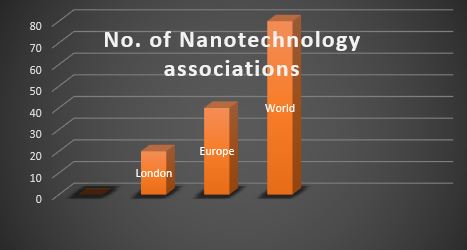
The organizing committee members is geartrain up for an exciting and informative conference program this year cojointly which incorporates comprehensive lectures, symposia, workshops on a variety of topics, poster presentations and various programs for participants from everywhere the planet. We invite to hitch at Advanced Materials 2020 Australia wherever you may make sure to possess a meaty expertise with students from round the world.
Advanced Materials Market 2020 Report offers a professional and in-depth study on the current state of the Global Advanced Materials Market along with competitive landscape, Advanced Materials Market share and revenue forecasts 2025. This report is a valuable source of guidance for companies and individuals offering Industry Chain Structure, Business Strategies and Proposals for New Project Investments.

Inportance and Scope:
Advanced Materials 2020 Australia is associate exciting chance to showcase the new technology, the new innovations of your company, and/or the service your business could supply to a broad international audience. It covers tons of topics and it'll be a pleasant platform to showcase their recent researches on engineering, Simulation, Material Science, Modern Physics and other interesting topics.
The study focusses on the processing of new materials which facilitates its applications to the next generation of engineers and its high marketability has a great impact on the economy of the country. In the new decade the sustainability and influence on the environment lie in the core of the material development.
Why Brisbane?
The global nanotechnology market was valued at $1,055.1 million in 2019, and is projected to reach $2,231.4 million by 2025, growing at a CAGR of 10.5% from 2019 to 2025. Nano science and nanotechnology are the study of nanoparticles and devices, which find their application across all the science fields such as chemical, bio-medical, mechanics, and material science among others. Nanotechnology market encompasses the production and application of physical, chemical, and biological systems and devices at scales ranging from individual atoms or molecules to around 100 nanometers.
Nanotechnology carries a significant impact, and serves as a revolutionary and beneficial technology across various industrial domains, including communication, medicine, transportation, agriculture, energy, materials & manufacturing, consumer products, and households. Emerging use cases and application is expected to be one of the key factors contributing towards the growth of nanotechnology market size. The U.S. National Nanotechnology Initiative has estimated that around 20,000 researchers are working in the field of nanotechnology. For the UK, the Institute of Occupational Medicine has estimated that approximately 2,000 people are employed in new nanotechnology companies and universities where they may be potentially exposed to nanoparticles.
Future Growth of Advanced Materials and Nano Science:
The future growth prospects for the Advanced Materials & Nanotechnology market are optimistic and it is growing at a double digit CAGR in the past five years and is witnessed to continue at a robust rate.
Factors propelling the expansion of the fabric Science and engineering Market embrace the increasing and immediate want for the high-resolution info on Nano photonics, technological advancements, increasing government funding, and increasing R&D in the pharmaceutical and biomedical arenas. On the other hand, factors restraining the growth of the market include dearth of qualified and experienced researchers, lack of generalized simulation methods associated with the types of proteins, and highly time-consuming and expensive Nano materials & Simulation processes.
UK is that the largest market, closely followed by Europe. Both markets can register high single-digit growth rates for following five years. The Asian market is poised to grow at a double-digit rate owing to the increasing investment opportunities for companies in these immature markets and the increased focus of pharmaceutical and medical specialty firms towards the Asian region as an outsourcing destination.
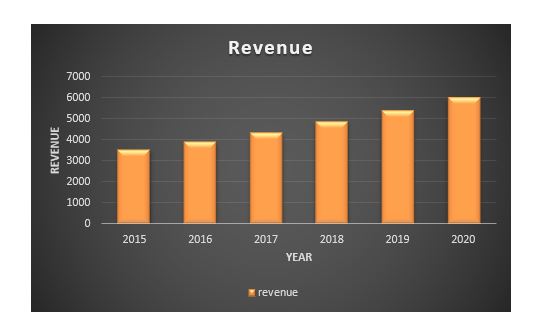
Major Advanced Material Associations:
- American Chemical Society
- American Physical Society
- The Materials Information Society
- The Materials Research Society
- Microscopy Society of America
- The Minerals, Metals & Materials Society
- Sigma Xi: The Scientific Research Society
- International Society for Optical Engineering
- The American Ceramic Society
Nanotechnology Associations:
- Brazilian Nanotechnology National Laboratory
- National Center for Nano science and Technology
- National Institute for Nanotechnology EU Seventh Framework Program
- Centre for Nano and Soft Matter Sciences
- Iranian Nanotechnology Laboratory Network
- Collaborative Centre for Applied Nanotechnology
- Russian Nanotechnology Corporation
- Sri Lanka Institute of Nanotechnology
- National Nanotechnology Center
- National Cancer Institute
- Institute Zulia no de Investigations Technological

Advanced Materials and Technology Universities:
- Massachusetts Institute of Technology
- Swiss Federal Institute of Technology Lausanne
- Korea Advanced Institute of Science and Technology
- The University of Queensland
- University of Science and Technology of China
- Delft University of Technology
- KU Leuven University
- Louisiana Tech University
- Northwest Missouri State University
- University at Albany
- University of Virginia
- University of Cambridge
- University Putra Malaysia
- City University of Hong Kong
Conference Highlights
- Science and Technology of Advanced Materials
- Advanced Materials and Research
- Nanotechnology & Advanced Materials
- Optoelectronics
- Microstructure and Characterisation of Materials
- Structural Engineering and Aerospace Structures
- Ceramics, Polymer and Advanced Fibre Composites
- Nanoparticle and Nanoscale Research
- Biomedical Nanotechnology
- Advanced Functional Materials and Nanoscience
- Cluster Science and Nanotoxicology
- Fundamentals and Applications of Photonics and Nanostructures
- Nanosensors and other devices
- Nanometrology and Instrumentation
- Electronic and Magnetic materials
- Development of New Advanced Materials
- Spintronics, Optical Materials and Plasmonics
- Carbon Nanostructures and Grapheme
- Nanomedicine
To share your views and research, please click here to register for the Conference.
To Collaborate Scientific Professionals around the World
| Conference Date | June 22-23, 2020 | ||
| Sponsors & Exhibitors |
|
||
| Speaker Opportunity Closed | Day 1 | ||
| Poster Opportunity Closed | Click Here to View | ||
Useful Links
Special Issues
All accepted abstracts will be published in respective Our International Journals.
- Journal of Materials Science and Nanomaterials
- Journal of Material Sciences & Engineering
- Journal of Nanosciences: Current Research
Abstracts will be provided with Digital Object Identifier by






